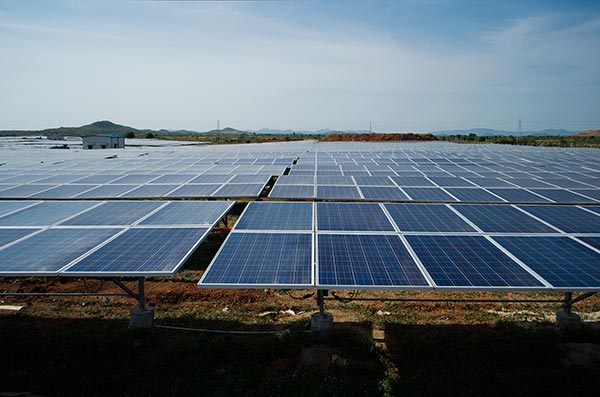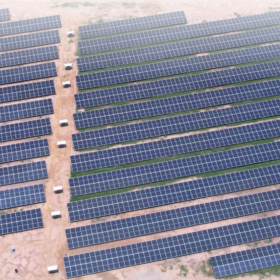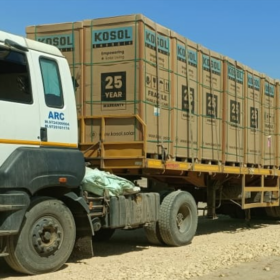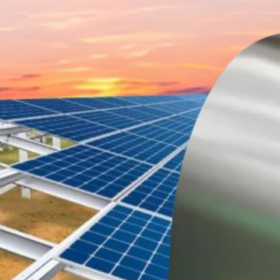Solar tariffs may rise to INR2.60-2.70/kWh in the next fiscal year due to the recent increase in the Goods and Services Tax (GST) applied to PV cells and panels, and a planned customs duty for imported solar modules, according to U.S.-owned Indian analyst Crisil Ratings.
Solar energy prices touched a low of INR2/kWh in a 1.07 GW solar auction held by the Solar Energy Corporation of India (SECI) in November and then dipped further, to INR1.99 in a 500 MW auction in Gujarat.
However, the recent increase in GST on solar cells and modules, from 5% to 12% with effect from October 1, has increased the total taxation on solar projects from 8-9% to 12-13%. That figure will more than double to 30% when customs duty of 40% on imported solar modules kicks in from April 1, according to Crisil Ratings analysts.
Recent increases in module prices have added to the cost burden on project developers. Prices for monocrystalline modules stood at $0.23-0.24 per watt in the April to September period, compared to an average $0.21/W in the previous fiscal year. That has been primarily due to a significant rise in the price of polysilicon, a key material in solar cells, because of disruptions at the manufacturing facilities of Chinese manufacturers.
Crisil Ratings director Ankit Hakhu said: “High module prices, taxes and duties are likely to result in project cost inflation for solar developers. Compared to fiscal [year] 2021, we expect the project cost to increase by 15-20% (INR60-70 lakh per megawatt), on average, to INR4.2-4.3 crore per megawatt next fiscal [year], from [the] INR 3.6-3.7 crore/MW seen during the last few [fiscal years]. This might make future solar bids expensive, at INR2.60-2.70/kWh, compared with the lows of INR2-2.20/kWh seen during fiscal [year] 2021, for developers to maintain returns of 11-12%.”
On the other hand, developers of already bid-out projects are expected to pass on the impact of taxes and duties under ‘change-in-law’ contract clauses.
The tariff calculation suggested by Crisil considers an anticipated reduction in solar module prices to $0.20-0.21 per watt in the next fiscal year, based on an expectation of a leveling of silicon prices following the ramp-up of operation in planned and existing production capacities. In the absence of such a price correction, tariffs could further increase, by INR0.15-0.20 per unit, to maintain desired developer returns, according to Crisil Ratings analysts.
PPAs
Electricity distribution utilities have been reluctant to sign power purchase agreements at tariffs above INR2.50/kWh. For instance, the projects allocated in a 12 GW manufacturing-linked tender in January 2020 – which yielded an INR2.90/kWh tariff – remained unsigned by the power off-takers until the second quarter of the current fiscal year, when the contracts received partial acceptance at a lower tariff of INR2.50/kWh.
Crisil director Aditya Jhaver said: “An increase in tariffs envisaged in future bids may scare away state distribution companies and add to an already large capacity, of 20 GW, that has been bid-out but [which] haven’t found a buyer for the electricity. On the other hand, if developers resort to aggressive bidding in a competitive market, it will likely increase the credit risk on new projects, as the cashflow cushion may be thinner.”
Thus, added the analyst, “the ability to take suitable tariff hikes, and approvals, under the change in law clause, remain key drivers for [the] credit quality of future projects. Further, while the custom duty will support the cost competitiveness of domestic module manufacturers vis-à-vis imports, no notable module price correction is envisaged from these players over the medium term as it will take some time for the domestic players to ramp-up the capacities along the entire value chain and lower their operating cost.”
This content is protected by copyright and may not be reused. If you want to cooperate with us and would like to reuse some of our content, please contact: editors@pv-magazine.com.









2 comments
By submitting this form you agree to pv magazine using your data for the purposes of publishing your comment.
Your personal data will only be disclosed or otherwise transmitted to third parties for the purposes of spam filtering or if this is necessary for technical maintenance of the website. Any other transfer to third parties will not take place unless this is justified on the basis of applicable data protection regulations or if pv magazine is legally obliged to do so.
You may revoke this consent at any time with effect for the future, in which case your personal data will be deleted immediately. Otherwise, your data will be deleted if pv magazine has processed your request or the purpose of data storage is fulfilled.
Further information on data privacy can be found in our Data Protection Policy.